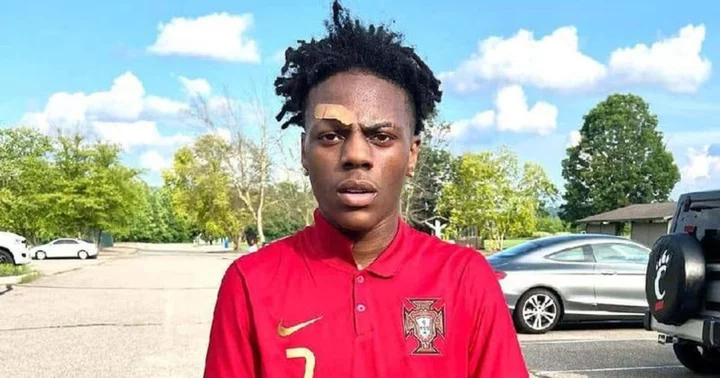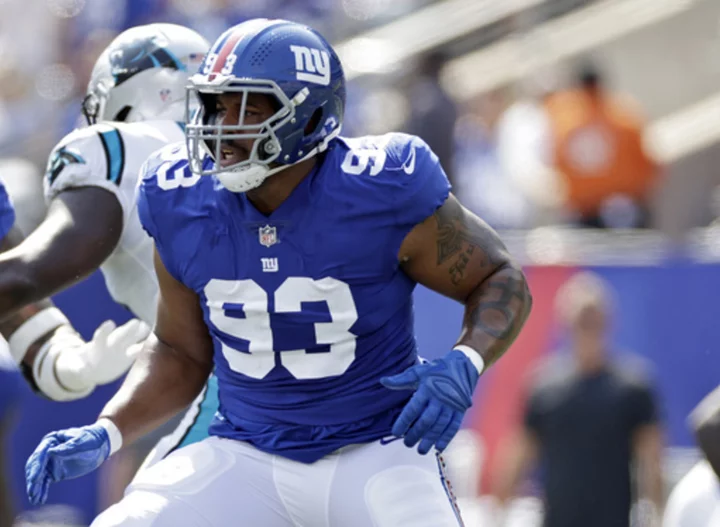
How did Douglas Clark die? Notorious 'Sunset Strip Killer' dies in prison at age 75
Clark, who was serving six consecutive death sentences at San Quentin Rehabilitation Center, died at an outside medical facility on October 11
2023-10-13 21:01

Norton Blake: NYC subway thug who beat 60-year-old woman with her own cane rants about 'judgment day' during arrest
'Judgment is coming on the face of the Earth, World War III is upon us,' Norton Blake yelled
2023-09-07 20:57

Beauty Couch: Boyfriend of influencer whose body was found near burning car arrested over her murder
The body of Couch, who also went by Beauty Katera, was found near a burned car in Georgia
2023-08-28 15:52

Who is Mattman? 'Friends' star Matthew Perry planned to work on superhero project before his tragic death
Adam McKay and Matthew Perry had discussed the Mattman project about an actor who becomes a superhero
2023-11-11 21:00

The Twins are bringing back Royce Lewis after an oblique strain cost him 36 games
The Minnesota Twins have returned third baseman Royce Lewis from his rehab assignment and reinstated him from the injured list following a 36-game absence because of a strained left oblique muscle
2023-08-16 03:12

Time Traveler’s Guide: Verb Tenses in 8 Languages From Around the World
If you've ever felt that English could use a couple more tenses to truly capture the nuances of the past, present, and future, this exploration of languages that have taken verb tenses to fascinating new heights is for you.
2023-08-17 00:00

Women's World Cup: Euphoria in Philippines after historic campaign
Filipinos cheer their new sports heroes as the team bows out of the tournament.
2023-07-31 13:47

Disney rocks DeSantis ahead of expected White House bid announcement
"DeSantisland" was likely not the happiest place on Earth on Thursday.
2023-05-19 12:09

European shares dip as real estate falls offset retail gains
European shares inched lower on Tuesday as declines in real estate stocks amid rising bond yields offset gains
2023-08-15 15:29

IShowSpeed baffled after TikTok unexpectedly bans him for 'sexual activity' during live chat with girl
IShowSpeed's recent ban from TikTok came as a surprise
2023-10-07 18:14

Bride divides internet after charging guests £2,000 to attend her wedding
A bride has annoyed people of the internet by charging guests £2,000 to attend her nuptials. Reportedly posting on Mumsnet, one of the guests claimed she had been invited to stay at a villa with the bride’s family and friends and was asked to split the cost for a week regardless of how long she could stay. She wrote: “The thought of spending a week socialising in a villa feels overwhelming, particularly when I don't know anyone and everyone else is in a couple, so I was going to stay only four nights.” So, she asked to share a room with another guest to cut costs but the bride didn't take it well. “She started crying and said she was upset because I have never been enthusiastic about her wedding plans (which is true, when she first asked for my villa deposit, I had asked a few times about other accommodation options),” she explained. After complaining, the bride reportedly refused to talk to her friend and the pair later ended up embroiled in a "heated discussion". The wedding guest was allegedly told: “It's clear the time/cost/venue etc. is asking too much of you and if it had been the other way round, it wouldn't have even crossed her mind to think about these things.” The woman's deposit was returned but she was still unsure about going to the wedding. She wrote: “She has always been quite selfish but I'm really upset by her lack of understanding as to why I don't want to spend a week with strangers and that I really did want to speak about the wedding. But at the same time, I know weddings are stressful and maybe she was trying to be sensitive. “Truth be told I'd rather go to a school friend's wedding on the same weekend who I feel like is a much better friend.” Responding to the situation, one commenter reportedly wrote: "The friendship is already over I'm afraid. I wouldn't go. I'm sorry." Another added: "It sounds like the friendship is going to survive much longer anyway." While a third said: "You shouldn't have to fund someone else's wedding." Sign up to our free Indy100 weekly newsletter Have your say in our news democracy. Click the upvote icon at the top of the page to help raise this article through the indy100 rankings.
2023-10-09 22:14

Messi skips Argentina's last practice before World Cup qualifier in Bolivia
Lionel Messi has skipped Argentina's last practice session before its World Cup qualifying match in Bolivia
2023-09-12 08:06
You Might Like...

SMBC agrees $3.7 billion deal for 25 Boeing 737 MAX jets

Dollar licks wounds after jobs shock; Aussie dips as inflation cools

Corent’s SaaSOps™ powers Everything Blockchain’s next-gen “Database as a Service” on AWS Cloud and AWS Cloud Marketplace

GPR Named “Sensor Technology Solution Of The Year” In 2023 AutoTech Breakthrough Awards Program

Immunologist wins 'Breakthrough Prize' for innovative cancer treatment

Chargers add depth to defensive line with signing of Nick Williams

Cardinals: 4 pitchers St. Louis should target for 2024 reset

Cambodian lawmakers approve changes to election law that disqualify candidates who don't vote
